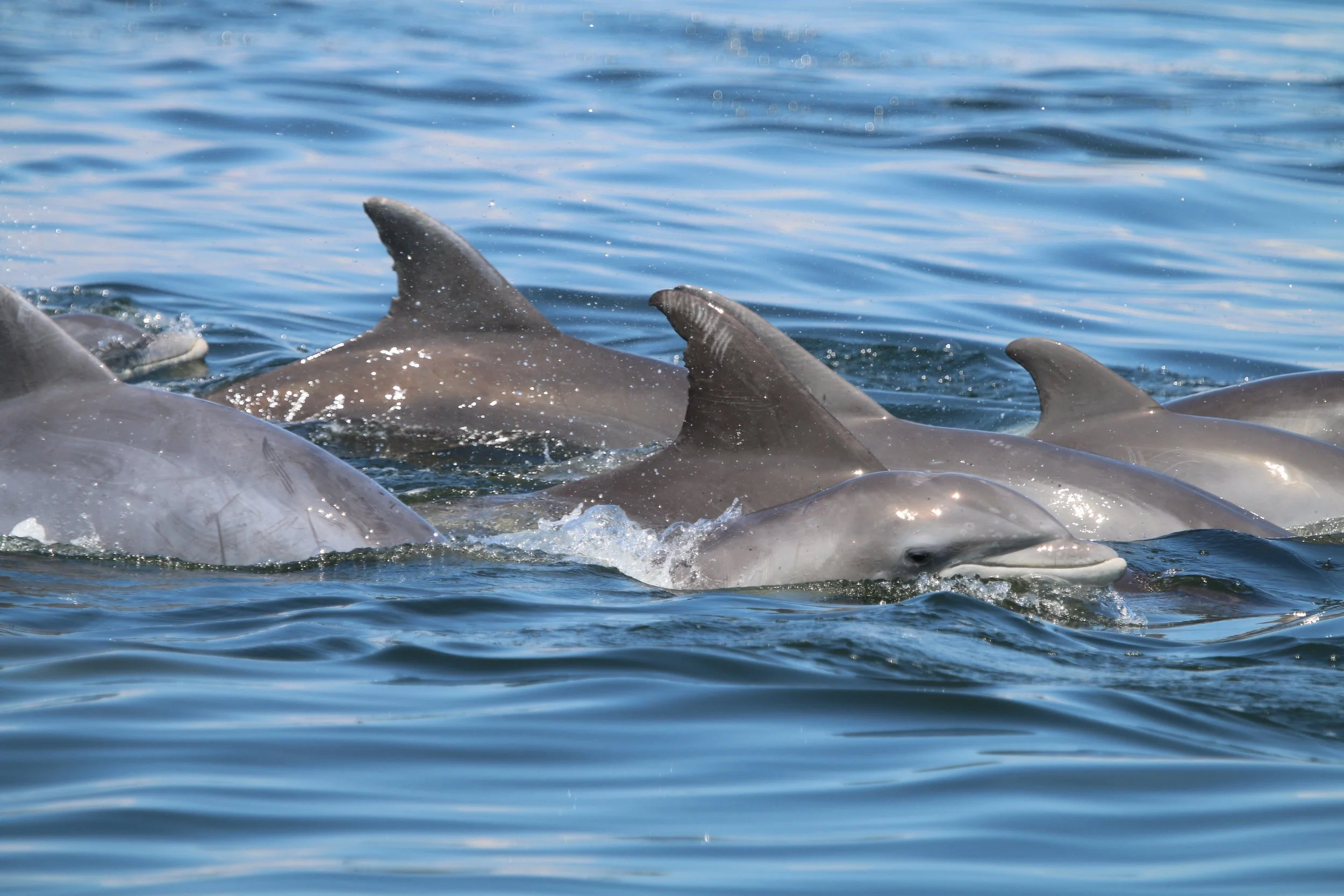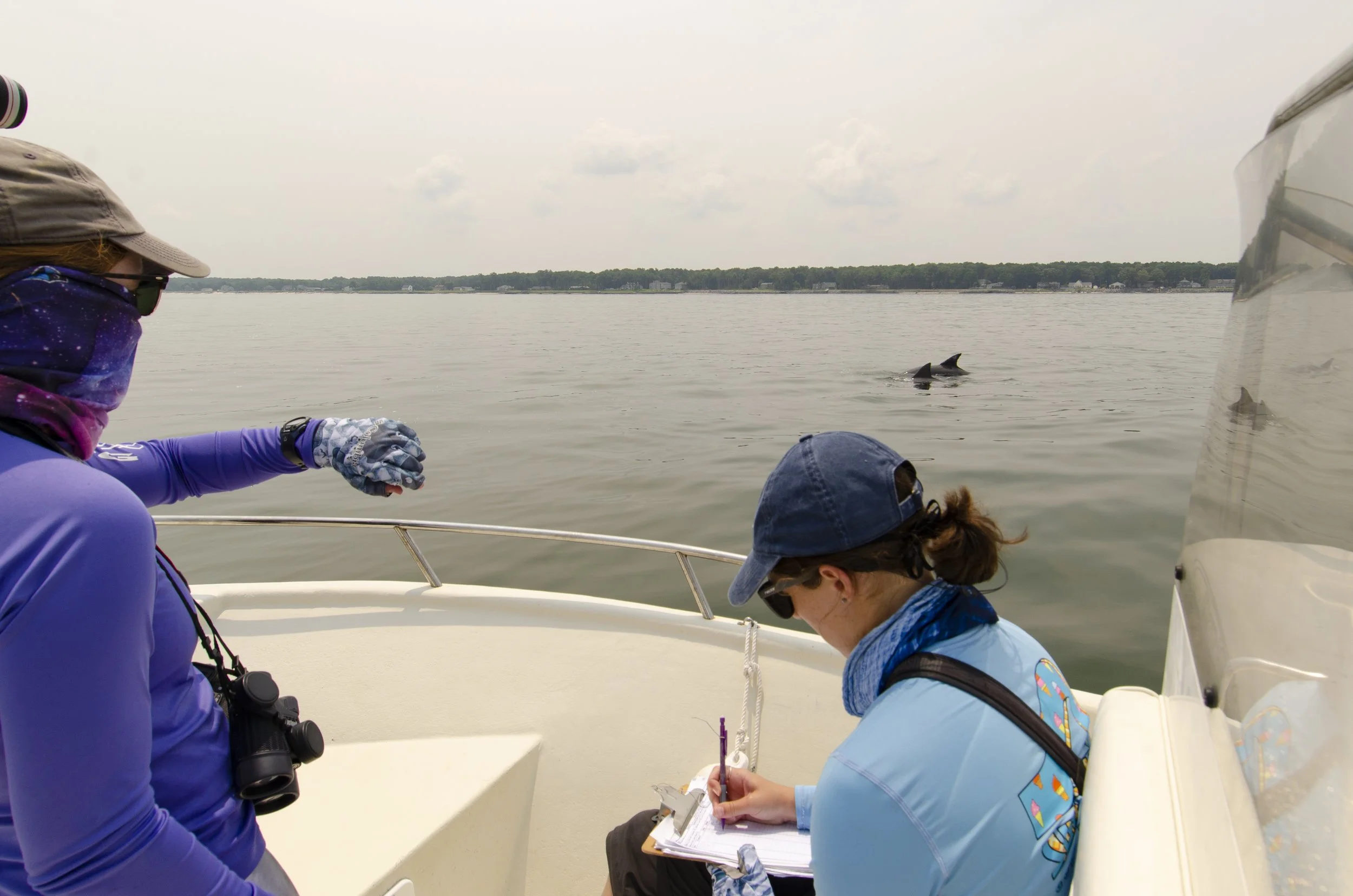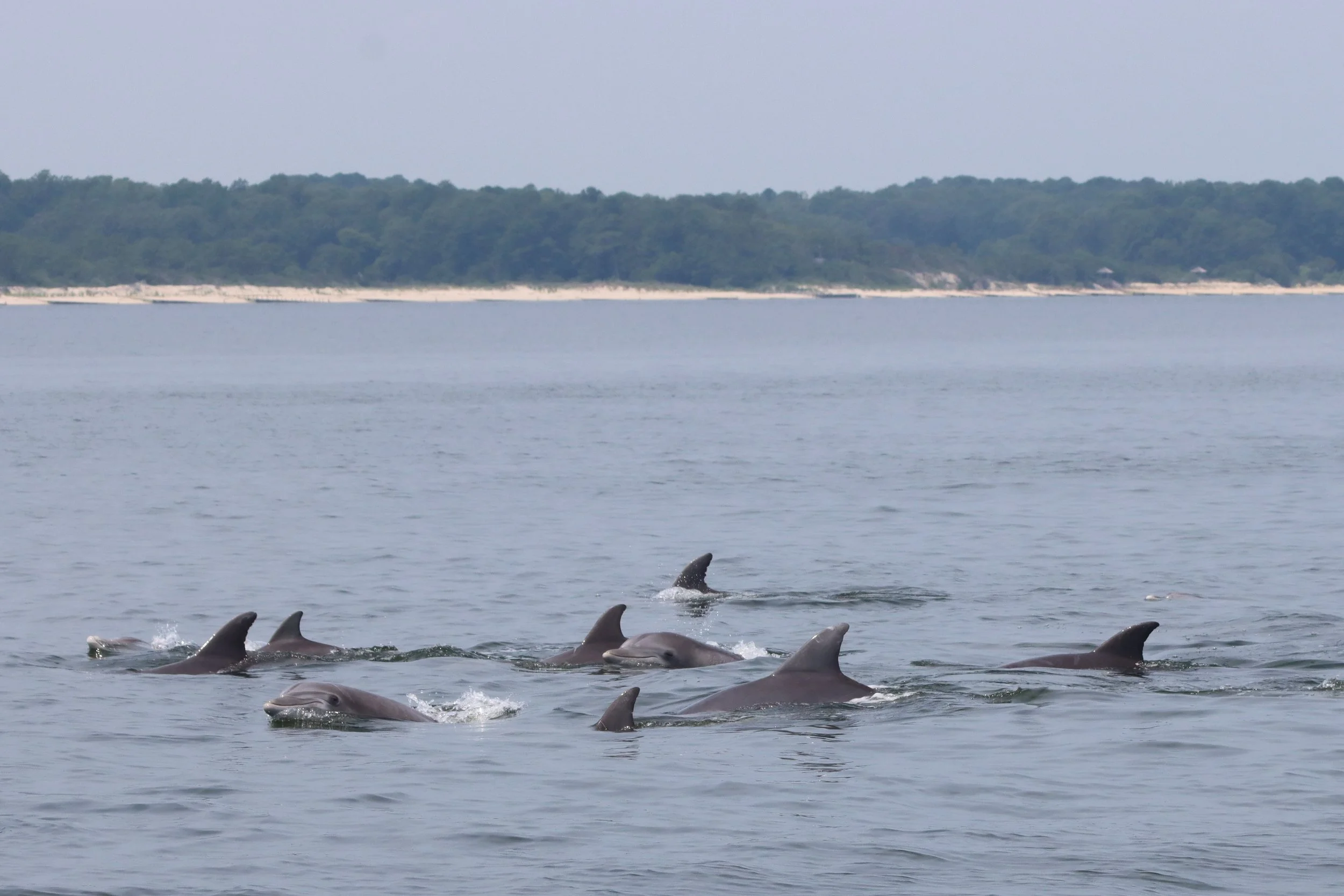River of Intrigue: The Potomac's Dolphins and Their Disease Saga
/Ask an Expert: Melissa Collier, (Biologist and PhD Candidate), Potomac-Chesapeake Dolphin Project
IMAGE COURTESY OF ANN-MARIE JACOBY, THE POTOMAC-CHESAPEAKE DOLPHIN PROJECT. TAKEN UNDER NMFS PERMIT NO. 19403
Perhaps the biggest non-human threat to dolphins worldwide is disease, and the dolphins that visit the Potomac River are no stranger to this threat.
In the late 1980s, bottlenose dolphins along the US Atlantic coast lost close to 50% of their populations from a viral outbreak. Alarmingly, the majority of known mortalities (also known as “strandings”, or when a dolphin mortality is found washed ashore or floating) occurred in Maryland and Virginia waters. Since the occurrence of this event, experts at the National Marine Fisheries Service consider their population below sustainable numbers.
If this wasn't bad enough, these animals were once again impacted by the same virus from July 2013 - March 2015 causing them to lose close to 40% of their population.
Since bottlenose dolphins are a key predator in the Potomac River’s aquatic ecosystem it's important to understand how their health impacts the state of the River…and vice versa.
Locations of bottlenose dolphin strandings (known deaths) in Maryland and Virginia waters during the 2013-2015 viral outbreak. Data collected by the Greater Atlantic Regional Marine Mammal Stranding Network and provided by the National Marine Fisheries Service. Map courtesy of Ann-Marie Jacoby.
In 2015, Dr. Janet Mann of Georgetown University started the Potomac-Chesapeake Dolphin Project in part to study the animals directly affected by this deadly epidemic. I joined the project in 2018 and have focused most of my PhD dissertation on this topic under the advisement of both Dr. Mann and Dr. Shweta Bansal.
When you last saw us, we’d just undertaken a major study to learn how disease can transmit among our Potomac dolphins, and now we have a clearer picture.
What we’ve found so far and what we’re still working on:
How does disease spread in dolphins?
Disease spread in dolphins is actually really similar to disease spread in humans. Dolphins can spread viruses by touching each other, or just breathing the same air. The virus that has killed so many Potomac dolphins is known as dolphin morbillivirus, but you might be more familiar with the common name of its human counterpart: measles.
A group of dolphins surface to breathe, and release respiratory droplets that viruses can spread on. Image courtesy of Ann-Marie Jacoby, the Potomac-Chesapeake Dolphin Project. Taken under NOAA NMFS Permit No. 19403
This means that the virus is transmitted by airborne droplets, just like flu and COVID-19.
Now, for an animal that spends most of its time under water, you’d think airborne viruses wouldn’t matter much. But, dolphins surface to breathe and often do so together, a behavior known as synchronized breathing. Synchronized breathing occurs when two or more dolphins surface at the same time, and breathe <6 ft from each other. It’s a really important social behavior for dolphins that signifies the development and strength of bonds.
It's kind of like walking down the street with your friends. Have you ever looked down and noticed your stride and gate are perfectly in unison? But sadly, this important bonding behavior can also result in transmitting deadly disease.
Collier photographs as two pairs of dolphins surface and breathe synchronously, a behavior that facilitates both social bonding and disease transmission. Video courtesy of Milan Dolezal, Potomac-Chesapeake Dolphin Project. Taken under NOAA NMFS Permit No. 23782
If we know how it spreads, how can we now study disease transmission in dolphins?
Collier (left) calls out the time of a synchronized breath between two dolphins, while field assistant Sarah Theisen (right) records. Image courtesy of Ann-Marie Jacoby, Potomac-Chesapeake Dolphin Project. Taken under NOAA NMFS Permit No. 23782
The short answer is a lot of hours observing dolphin behavior, and a lot of computer simulations!
Starting in 2020, I undertook a considerable task focused on collecting systematic data on synchronized breathing in our Potomac dolphins. The goal? Learn how often they “sync” and how it determines the spread of disease.
After more than 100 days on our boat “Ahoya” in the summers of 2020-2022, I collected breathing data on more than 100 different dolphins. I counted how often they sync and how many dolphins they sync with. These data gave me a synchronized breathing contact rate for dolphins that is relevant for understanding how morbillivirus spreads.
Fortunately, there is no active outbreak happening in the Potomac dolphins right now, so I modeled disease spread instead using computer simulations based on the rate of synchronized breathing contact I observed.
So, what have we found?
First, we found that sync contact rate is not the same across all dolphins! Just like humans, individuals vary in how frequently they contact each other. This means that the risk of contracting and spreading disease is different for each individual dolphin.
This was a common observation during the COVID-19 pandemic, where some individuals had more contacts than others due to their professions (e.g. healthcare workers, first responders) and therefore had a much higher chance of getting infected.
A typical group of dolphins in the Potomac can consist of adults, juveniles, and calves of both sexes. However, Collier has found that the rate at which they synchronize their breathing with each other varies, meaning their infection risk varies too. Image courtesy of Ann-Marie Jacoby, Potomac-Chesapeake Dolphin Project. Taken under NOAA NMFS Permit No. 23782
Second, we found that juveniles (i.e., dolphin ‘teenagers’ ages ~4-10 years) have higher contact rates than adults and calves. And, within adults, males have higher contact rates than females. This means that in my computer simulations ‘teenage’ animals and adult males ended up infected more often than adult females and calves.
What’s particularly exciting is that my computer simulation results reflect what was actually observed in the 2013 morbillivirus outbreak. Based on data from the National Marine Fisheries Service, juveniles died at a disproportionately higher rate compared to adults and calves, and more adult males died than adult females.
Our results therefore suggest that because juvenile dolphins and adult males breathe together more frequently compared to adult females and calves, they end up dying more in deadly disease outbreaks, and likely drive the spread of disease through their whole population.
What’s next for us, and how can you help?
We have a pretty good idea how deadly diseases can spread through dolphin populations at this point and what ages and sex classes are most important to target to help with disease mitigation. We plan to publish our results in a scientific journal very soon!
We also want to take this research a step further and study how viruses like morbillivirus can spread along an entire coastline, by investigating where else Potomac dolphins go when they’re not here. If we know where the infected dolphins are going, then we can help predict where along the coast we might see viral outbreaks.
Past morbillivirus outbreaks have spanned from New York all the way down to Florida. In the most recent outbreak, the National Marine Fisheries Service reported more than 1,650 dolphins along this entire coastline were killed.
If we know both how and where diseases will transmit in dolphins, then we can use our research to predict when a morbillivirus outbreak might happen again. There has been no reported outbreak on the US Atlantic coast since the end of the 2013-2015 epidemic, but remember that there was one prior to it in the late 80s.
Based on the current rate of recurrence, another mass die off from disease could be in the cards for the Potomac dolphins in the next decade.
What can you do to help?
My past dissertation work has shown that human disturbances in our waterways can exacerbate disease spread in dolphins.
Polluted waters can make dolphins more susceptible to being infected, and make them less likely to fight off infections or even die from infection. Harassment from humans has also been shown to increase rates of breathing synchrony in dolphins which means increased contact rates and therefore opportunities for disease transmission.
BECOME A STEWARD: Being good stewards of the environment is an easy and critical way to decrease these disturbances. Advocating for improved, climate-friendly infrastructure to mitigate polluted runoff and reducing waste are two ways you can make a difference. Get involved with Potomac Conservancy and other local environmental groups who are taking direct actions to reduce water pollution.
KEEP YOUR DISTANCE: For those of you that recreate in the Potomac, maintaining a safe distance from dolphins is key to reducing stress, sound pollution, and avoiding accidental injury. Dolphins use sound to communicate and hunt but boat engines can drone out their ability to do either. Under the Marine Mammal Protection Act, people must remain 50 yards or half a football field away from dolphins.
REPORT SIGHTINGS: It is important to identify disease early on. If you see a dead dolphin while out on the Potomac, please report it to the Virginia stranding hotline at (757) 385- 7575 or the Maryland stranding hotline at 800-628-9944. They will determine the cause of death. You can also report your sightings of live dolphins on the Chesapeake Bay Dolphin Watch app!
FUND THE RESEARCH: Lastly, this work is costly given the equipment, boat fuel, personnel, and living costs associated with data collection. Donations are immensely helpful in covering these costs. If you would like to donate to this research project, please visit our donation page.











